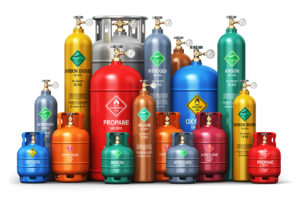
Interview with Deepesh Parikh.
Deepesh is a specialist Project Management and Client Relationship Manager to existing and new Expense Reduction Analysts clients. Deepesh holds a degree in industrial engineering and has post-graduate qualifications in marketing and business management, with the latter from Massey University in New Zealand. Deepesh has over 25 years’ experience internationally in technical sales, product management, sales management and marketing management.
Deepesh, can you tell me about industrial gases in the WA market?
The term ‘industrial gas’ encompasses gases used for industry in welding, cutting, and fabrication. The term ‘medical gas’ is used for medical purposes, and the term ‘speciality gas’ is used for research and development in universities and research institutes. These gases are mainly separated from air using air separation technology. Air contains approximately 78% nitrogen, 21% oxygen, 1% argon and rest is made of xenon, krypton, and neon.
Historically, there has been very little competition in the market in WA. There have been two main suppliers, BOC and Air Liquide, and a few more have entered the market recently in the past 9 or 10 years. We are also now seeing global suppliers making forays into bulk supply to the mining industry.
Most end users are not aware of the opportunity to find savings by exploring the possibilities with competing suppliers.
Where are consumers being caught in the pricing of industrial, speciality and medical gases?
Most consumers know what gases they are purchasing and using; they also know their consumption (volume used per annum), but the majority of them are only comparing the price of the gas, while other costs are contributing to the overall cost of the supply of gas.
Different gas companies supply different volumes for the same gas per cylinder, which means the total volume consumed per year may be supplied with a different number of cylinders. For example, a nitrogen G size cylinder from one supplier may be 10 cylinders, whereas another supplier may be 7 cylinders due to higher volume filled per cylinder. This means if the comparison of price per cylinder is on par, end users are going to use more cylinders from one supplier and therefore pay more.
The overall cost of the gas also includes rental of the cylinders and other equipment supplied by the companies. Rental charges vary between suppliers, which should be taken into consideration. Cylinders or any equipment storing gas always remain the asset of the gas company, and their rental cost is a major component contributing to the overall margin of the gas companies.
The third component contributing to the total cost of the gas supply is the transportation of the cylinders. The cost of the freight is usually paid by the end users, and most of the time it is not taken into consideration for the total cost of the supply.
This includes delivery of the filled cylinders, and sometimes the collection of empty cylinders. A majority of gas suppliers will have their own fleet of delivery vehicles due to safety standards that need to be adhered to. Depending on the number of deliveries per week or month, the cost of freight may be negotiated.
Are there recent innovations which could enable consumers to reduce their consumption and costs?
Due to high competition in the gas supply market with many small to big players entering the industry, there are many innovations such as:
- designing high-pressure cylinders to fill more volume of the gas;
- valves with inbuilt equipment to check the volume, and
- regulators to control pressure are available to replace traditional gas cylinders valves.
These regulators help ensure that full cylinders are received, and half-full cylinders are not returned to the supplier by mistaking as an empty cylinder. Gas lasts longer with higher volumes, and there is less manual handling, less ordering, and lower freight costs.
How can someone find the best savings opportunities in their business?
Using an external consultant like myself, who comes from the gas industry, brings a huge advantage to the negotiation of pricing.
What about their contract?
We can ensure that the contract is fair to the client. In my experience, the phrasing is very important, and you should avoid autorenewal-type clauses. If there are multiple end users and gas lines connected to various pieces of equipment, these connections should be checked regularly for leakage. Regular gas storage safety audits should also be incorporated into the contract.
Contracts for the bulk supply of gas with high installation costs of storage equipment and supply lines should be negotiated. Additional commercial terms may be negotiated, and I look at each to benefit clients, which helps them to exit the contract with proper planning without paying unrealistic fees.
The contractor supply agreement period is important for looking at the criticality of supply, and these terms should be agreed in advance.
Some speciality gases are imported, and the price is driven by global market fluctuations. This will be passed on to the end users from time to time, and with our knowledge of the worldwide market, Expense Reduction Analysts can help negotiate these price increases. If there are high-value items, we can also request a reduction in price with the downward trend of the price for the items globally. Prices can fluctuate due to the increase or decrease in exchange rates as well, which can be adjusted accordingly.
Expense Reduction Analysts can also review the rental costs, freight costs as well as the cost of the gas itself. I have recently been working with a client who runs clinical laboratories across Australia, and we have saved approximately 25% in rental costs alone. I believe there is excellent potential in WA to reduce the cost of industrial, medical and speciality gases through benchmarking and thorough review and tender processes.